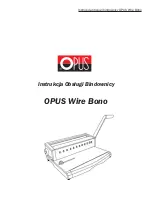
Sailrite Fabricator Guidebook
| 18
Check the Machine for Operation:
Plug the motor in and flip the power switch on the motor front. Verify that there is no thread going
through the needle’s eye and that the fabric sample is removed from under the foot. Make sure the
presser foot is up and push down slowly on the top of the foot pedal to operate the machine. Use your
heel to push the bottom of the pedal and the machine will stop. Turn the motor off.
See “Operation” in the Workhorse guidebook for more information and how to set the motor speed.
Summary of Contents for Fabricator
Page 1: ...Set Up Use Maintenance Troubleshooting Schematics ...
Page 25: ...Sailrite Fabricator Guidebook 22 43 ...
Page 26: ...23 Sailrite com 44 ...
Page 37: ...Sailrite Fabricator Guidebook 34 63 B I A ...
Page 70: ...67 Sailrite com 24 23 19 22 9 8 16 12 14 13 15 6 5 2 1 4 3 18 17 21 25 26 8 7 11 10 20 27 ...
Page 74: ...71 Sailrite com 1 2 3 5 6 4 7 8 18 9 10 11 13 14 19 15 16 12 18 17 9 4 4 ...
















































